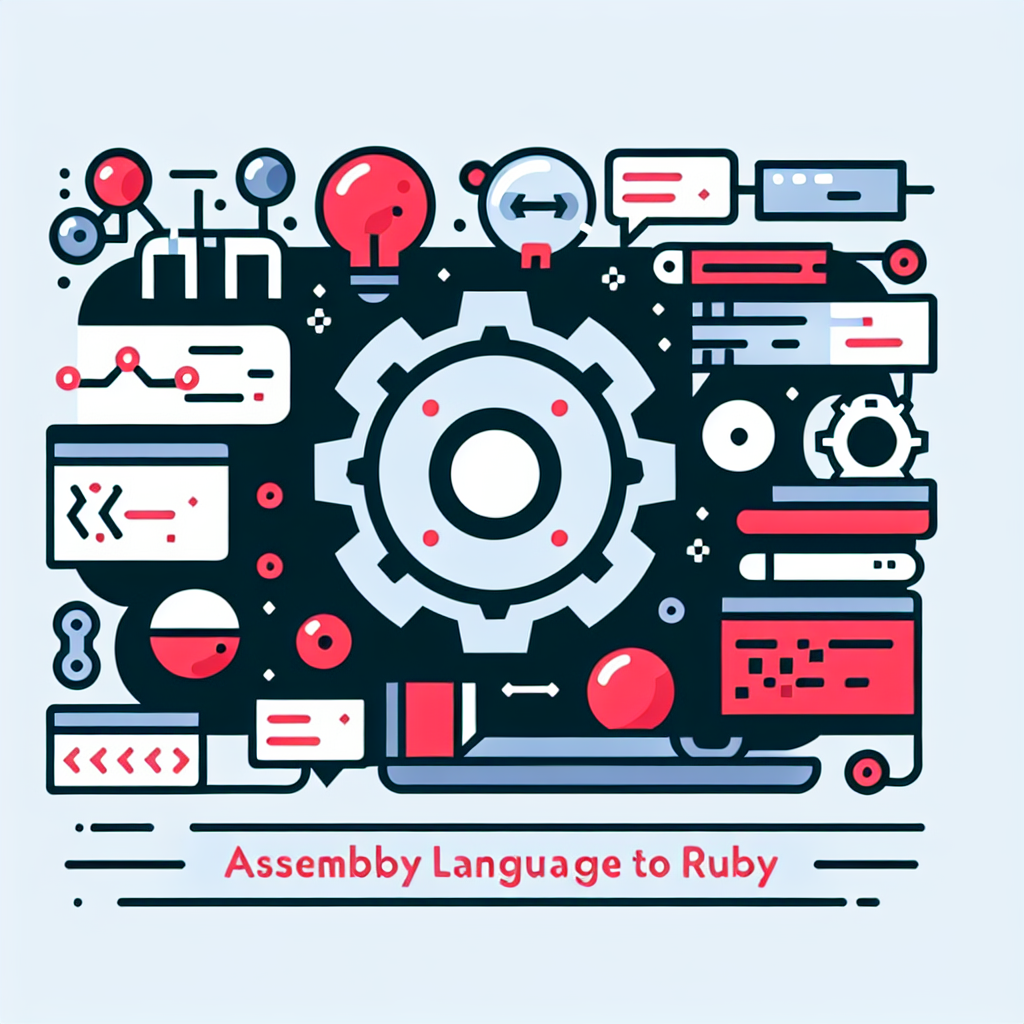Convert Assembly Language to Ruby: Fast & Easy Tool
Transform low-level assembly code into high-level Ruby effortlessly. Explore our tool for seamless conversion, boosting efficiency and coding precision.
Source Code
Converted Code
Output will appear here...
Transform low-level assembly code into high-level Ruby effortlessly with our Assembly to Ruby converter. Ideal for developers looking to enhance productivity and maintainability, this tool simplifies code migration while preserving performance. Perfect for modernizing legacy systems, it streamlines the transition to Rubys versatile environment.

Assembly Language to Ruby Conversion Tool Link to this section #
Discover the power of converting low-level assembly language to high-level Ruby code seamlessly with our specialized tool. Designed for developers looking to bridge the gap between hardware-level programming and modern application development, this tool streamlines your workflow and enhances code readability.
Key Features: Link to this section #
- Automated Conversion: Transforms complex assembly instructions into Ruby syntax effortlessly, saving you time and reducing errors.
- Syntax Highlighting: Improves code comprehension by visually distinguishing elements like variables, functions, and loops.
- Interactive Interface: User-friendly design allows for easy navigation and minimal learning curve.
Benefits: Link to this section #
- Improved Efficiency: Automate repetitive tasks, allowing you to focus on building innovative solutions.
- Enhanced Debugging: With Ruby’s robust debugging tools, identify and resolve issues faster compared to working directly in assembly.
- Cross-Platform Compatibility: Ruby’s versatility ensures your code runs smoothly across various platforms.
Code Comparison: Link to this section #
Assembly Code Example:
MOV AX, 1
ADD AX, 2
Converted Ruby Code:
ax = 1
ax += 2
How It Works: Link to this section #
- Input: Paste your assembly code into the tool.
- Process: The tool analyzes the code, identifying patterns and logic.
- Output: Receive a clean, maintainable Ruby code snippet.
Why Choose This Tool? Link to this section #
- Accuracy: Developed by experts, ensuring precise conversion aligned with Ruby best practices.
- Community Support: Join a network of developers here for assistance and collaboration.
- Regular Updates: Stay ahead with the latest features and improvements.
For further learning, explore resources like Ruby Documentation and engage with the Assembly Language Community. Let our tool be the bridge between the efficiency of assembly and the elegance of Ruby.
Transform your coding approach today!
Frequently Asked Questions
What is the primary difference between assembly language and Ruby?
The primary difference between assembly language and Ruby is the level of abstraction. Assembly language is a low-level language that provides a direct interface to the hardware, requiring detailed knowledge of the system's architecture. Ruby, on the other hand, is a high-level, interpreted language designed for productivity and ease of use, abstracting away hardware details and focusing on developer-friendly syntax.
Can you convert assembly language code directly into Ruby?
Direct conversion from assembly language to Ruby is not typically feasible due to the fundamental differences in abstraction levels and paradigms. Assembly language is hardware-specific and operates with registers and memory addresses, while Ruby is a high-level language with built-in data structures and libraries. However, you can rewrite the logic of an assembly program in Ruby by understanding the functionality and recreating it using Ruby's constructs.
Is it beneficial to learn assembly language before Ruby?
Learning assembly language before Ruby can provide a deeper understanding of how computers execute instructions and manage resources, which can be beneficial for optimizing performance and debugging. However, it is not necessary to learn assembly before Ruby, as Ruby is designed to be accessible and easy to learn without prior low-level programming experience. The choice depends on your goals and interests in programming.